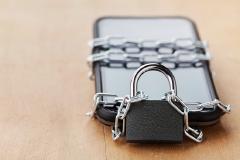Categories
Lost or stolen phone? What to do next
5 minute read

Not only is your phone one of the most valuable things you’re likely to carry with you every day, but it’s also your means of communication, the home of your photos and saved messages, and maybe your way of accessing your bank account.
Here’s what to do if you lose your phone, and some steps you can take to prevent the stress of it all in the future.
Lost or stolen mobiles: next steps
These days, our mobile phones hold a ton of personal information. Luckily, manufacturers and app developers have created many tools to help in the event you are parted from your smartphone. So you can keep your data safe or even be reunited with your phone again.
Top 5 things to do as soon as you realise your phone is lost/stolen:
- Report your phone to the police as lost/stolen and contact your provider so that they can block use of the phone
- Do you use contactless payments with your handset? If so, contact your bank immediately (more information on this below)
- Change any email, social media, or online banking passwords that are stored on the phone
- Wipe the data stored on your phone (find out how to do this after it has disappeared below)
- If you have contents insurance, check to see if you can make a claim

What to do if you have contactless payments set up on your phone
Nearly a third (32%) of adults in the UK were registered to use mobile payments by the end of 2020. Last year, 10% of all payments were made using mobile wallets.
Contactless payments are tied to your bank card, so you’ll need to contact your bank to inform them and block any more payments as soon as possible.
For Apple Pay, Barclays says: “If you lose your Apple device, you can put it in Lost Mode to suspend Apple Pay, or you can wipe your device completely clean; just log in to iCloud to manage these settings.”
If you have an Android and use Google Pay, Natwest says: “If your Android device is lost or stolen, you must remove Google Pay from the device. You can do this by contacting the Digital Wallet Support Team as soon as possible.”
All banks may have slightly different ways of managing digital wallet security, so read up on your bank’s website directly for more specific support.
Top tip: It’s a good idea to protect your contactless software by arming it with a passcode or Face ID.
Track your phone
iOS and Android have methods which, in the event of losing your phone, enable you to keep tabs on where your smartphone is via a computer and in some cases, what state it’s in.
Remember: if someone has taken your phone and you’ve successfully tracked it down, the safest thing to do is call the police.
Android
Android phones use ‘Find My Device’. All you have to do is sign into your Google account on the device and enable Location and Find My Phone. If you’ve done that, you can use your Google account to log into Find My Device and see your phone’s last location.
iOS
You’ll need the ‘Find My’ app if you’re using an Apple device. Once you’ve toggled the service to ‘on’ in your phone’s settings, along with active location services, you’re good to go.
Head over to iCloud on a computer and log in with your Apple ID. The Find My map will show you where your device is, enabling you to lock the device, make it play a tone, display a message or perform a wipe, all the while letting you keep an eye on your iPhone’s battery too.
Register your phone
Regional police forces across the UK support Immobilise as part of the UK National Property Register. This online service lets you make a private portfolio of precious items, including personal electronics.
Enter a description of the item, unique identifying characteristics, and in the case of a smartphone, its IMEI number, so it can be identified and returned if it’s handed in.

Top tip: An IMEI (International Mobile Equipment Identity) number is an identifier unique to your phone. You can find it in your Settings in the About section.
Backup your phone
Smartphones now offer sophisticated backup capabilities. Here’s how to back yours up depending on your operating system.
Android
When you first set up your Android device, there was an option to back it up to your Google account, if you didn’t do this, select ‘Backup my data’ and ‘Automatic Restore.’ If you lose your device, setting up a replacement should be painless, as your account login will also bring with it your apps, passwords and wallpapers.
iOS
Provided you set your device to sync to iCloud; which can be found in the ‘Settings’ under iCloud, when you get a new/replacement iPhone you can restore photos, apps, passwords and anything you’ve set to sync from the cloud.
Get insured
If your phone is stolen, or you lose it, it’s worth taking out insurance, even if you eventually get it back. If you’ve bought a new phone, it will come with a manufacturer’s warranty, but this is not the same as insurance and does not cover for loss or theft.
Need a new phone? Explore our range of new and refurbished phones online at giffgaff.





